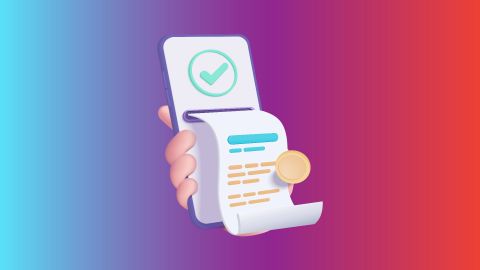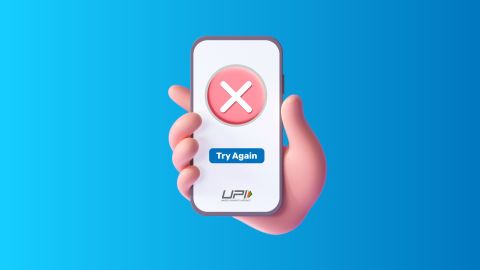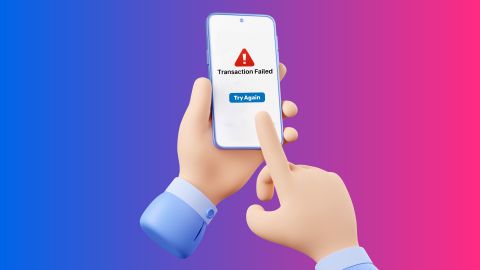Understand the different types of Rectifiers available, their functions.
Types of rectifiers
-
What is a rectifier and why is it important?
A rectifier is a device that converts alternating current (ac) into direct current (dc). Electricity in our homes flows in the form of ac, but many electronic devices and machines need dc to work. Rectifiers play a key role in this conversion process. For example, mobile phone chargers use rectifiers to convert ac into dc for charging batteries. Without rectifiers, many electronic gadgets like laptops, televisions, and other appliances would not function properly.
Rectifiers, whether single-phase, three-phase, or bridge, play a key role in converting AC to DC power for various electronic applications. Similarly, just as rectifiers ensure smooth, reliable power conversion, Bajaj Finserv’s electricity bill payment platform, Bajaj Pay, makes managing your energy bills straightforward, offering a hassle-free way to keep your home running efficiently.
Rectifiers are crucial in industries too. They help power equipment like welding machines, electroplating systems, and communication devices. These systems rely on stable and continuous dc power, which rectifiers provide efficiently.
If you depend on reliable electricity to power your devices, timely electricity bill payments ensure uninterrupted supply. Platforms like Bajaj Pay make it easy to pay bills online without hassles. A stable electricity connection ensures rectifiers can perform their job seamlessly, keeping your electronics running.Different types of rectifiers
Rectifiers are classified based on the number of diodes and the type of input supply. Let’s explore the major types:Type of rectifier Function Application Half-wave rectifier Converts only half of the ac cycle into dc Simple circuits and low-power devices Full-wave rectifier Converts the entire ac cycle into dc Efficient for moderate power devices Bridge rectifier Uses four diodes for maximum efficiency Power-intensive applications Types of rectifiers
1. Half-wave rectifiers- Converts only the positive half of the ac cycle.
- Suitable for devices needing less power.
- Converts both halves of the ac cycle.
- Offers better efficiency than half-wave rectifiers.
- Uses four diodes to convert ac into dc.
- Ideal for heavy-duty applications requiring high performance.
Common uses and applications of rectifiers
Rectifiers are used across multiple fields:- Electronics: powering devices like tvs, radios, and battery chargers.
- Industries: supporting processes like electroplating and arc welding.
- Renewable energy: converting solar or wind power into usable dc electricity.
How to choose the right rectifiers?
Selecting a rectifier depends on your specific needs. Here are some tips:- Power requirement: choose based on the device’s power needs.
- Efficiency: opt for a rectifier that offers minimal power loss.
- Size: ensure it fits within your device’s setup.
- Durability: look for high-quality rectifiers for long-term use.
Factors affecting rectifier selection
When deciding on a rectifier, keep these factors in mind:- Input voltage: ensure compatibility with your power source.
- Current rating: select a rectifier that matches your device’s current demand.
- Heat dissipation: good heat management extends the lifespan of rectifiers.
- Application needs: consider whether your device needs half-wave, full-wave, or bridge rectifiers.
Advantages of using rectifiers
Rectifiers offer several benefits:- Energy efficiency: reduce power wastage.
- Device longevity: protect devices by providing stable dc power.
- Cost-effective: affordable solutions for energy conversion needs.
Conclusion
Understanding the types of rectifiers helps in choosing the right one for your needs. Ensuring a stable electricity supply with timely bill payments is equally crucial. Platforms like bajaj pay simplify this process, offering fast and secure bill payment options.
-
Recharge and Pay Bills
Mobile Prepaid
Mobile Postpaid
Broadband Bill Payment
Electricity Bill Payment
Bajaj Finserv App for All Your Financial Needs and Goals
Trusted by 50 million+ customers in India, Bajaj Finserv App is a one-stop solution for all your financial needs and goals.
You can use the Bajaj Finserv App to:
You can use the Bajaj Finserv App to:
- Apply for loans online, such as Instant Personal Loan, Home Loan, Business Loan, Gold Loan, and more.
- Explore and apply for co-branded credit cards online.
- Invest in fixed deposits and mutual funds on the app.
- Choose from multiple insurance for your health, motor and even pocket insurance, from various insurance providers.
- Pay and manage your bills and recharges using the BBPS platform. Use Bajaj Pay and Bajaj Wallet for quick and simple money transfers and transactions.
- Apply for Insta EMI Card and get a pre-approved limit on the app. Explore over 1 million products on the app that can be purchased from a partner store on Easy EMIs.
- Shop from over 100+ brand partners that offer a diverse range of products and services.
- Use specialised tools like EMI calculators, SIP Calculators
- Check your credit score, download loan statements and even get quick customer support—all on the app.
Frequently asked questions
What are the most common applications of rectifiers in daily life?
Rectifiers are used in chargers, power supplies, and household electronic devices requiring DC power.
What are common issues in rectifiers and how can they be fixed?
Overheating and component failure are common. Proper ventilation and regular maintenance help prevent these issues.
How does a rectifier convert AC to DC?
A rectifier uses diodes to block the negative part of the AC cycle, producing a DC output.
What is the difference between half-wave and full-wave rectifiers?
Half-wave rectifiers use only one half of the AC cycle, while full-wave rectifiers use the entire cycle.
Why are bridge rectifiers preferred for high-power applications?
Bridge rectifiers are more efficient and provide higher performance, making them ideal for heavy-duty use.
Show More
Show Less




